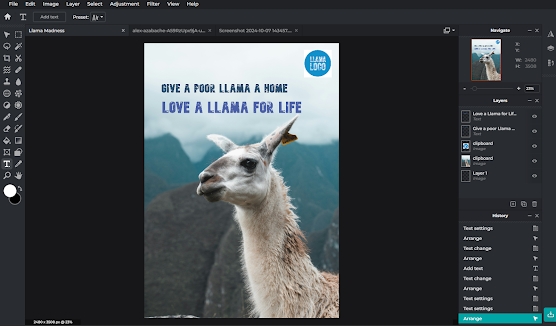Welcome to a new Academic Year 2024-25! This will be my 11th year at DMUIC and so welcome to all new students in Art & Design and Media.
To bring in the year I thought I would begin this term with O.G. Rejlander's photographic composition Two Ways of Life.
This is a very complex and beautiful composition from a master of early photographic techniques. Weiss states that;
'he [Rejlander] constructed this ambitious tableau from over thirty separate negatives in part to demonstrate that a photograph could be composed in the manner of a painting' (Weiss M.2018:94-95). This method of 'combination printing' could be considered in the manner of how we use Photoshop today laying image upon image. Each image here is taken separately then unified through the printing process to form the whole. In early photography it was common for photographers to try to emulate paintings as this was their reference as to how and image should be composed. Rejlander went one step further and believed that photographs could be raised to the status of Fine Art and this image composition was based on Raphael’s School of Athens (1509–11) (Editors of Encyclopedia Britannica, 2019)
The actual story of the image is the struggle between vice and virtue, it depicts; 'a bearded sage leading two young men from the countryside onto the stage of life. The rebellious youth at left rushes eagerly toward the dissolute pleasures of lust, gambling, and idleness; his wiser counterpart chooses the righteous path of religion, marriage, and good works' (Met Museum, 2000-2024) Rejlander had a skill in capturing peoples emotions and Darwin asked him to take a series of facial expressions of humans and animals for his book Expression (1872)
White states that; '
Photographs helped to make Expression Darwin’s most popular book. They show his use of novel methods and techniques, and his ability to engage with popular culture, to draw on Victorian sentimentality and melodrama in order to excite readers’ emotions, and encourage them to become active observers themselves.' (White, 2022) This is very interesting in that like social media now, this book brought attention to an idea and then the audience felt that they could participate in the conversation, considering how they express their emotions.
I chose to talk about Rejlander as now with the deluge of images that haunt our every move it is of vital importance that we concentrate and hone in on what is important to ourselves, our studies and to our own philosophy of life. This image will stay with me, I will be able to picture it in my mind's eye and then come and view it again again and this is what makes it important, every time I will find a new detail and it will always remain a true masterpiece of photography.
References
Editors of Encyclopedia Britannica (2019). O.G. Rejlander | Swedish photographer | Britannica. In: Encyclopædia Britannica. [online] Available at: https://www.britannica.com/biography/OG-Rejlander [Accessed 18 Sep. 2024].
Met Museum (2000-2024). Oscar Gustav Rejlander, Two Ways of Life. [online] Metropolitan Museum of Art. Available at: https://www.metmuseum.org/art/collection/search/294822 [Accessed 18 Sep. 2024].
Weiss M. (2018) Making It Up: Photographic Fictions, Victoria & Albert Museum/Thames & Hudson Ltd, London
White, P. (2022). Darwin’s favourite photographer: From O. G. Rejlander, 30 April 1871. [online] Darwin Correspondence Project. Available at: https://www.darwinproject.ac.uk/letters/favourite-letters/darwin-s-favourite-photographer-o-g-rejlander-30-april-1871 [Accessed 18 Sep. 2024].




























